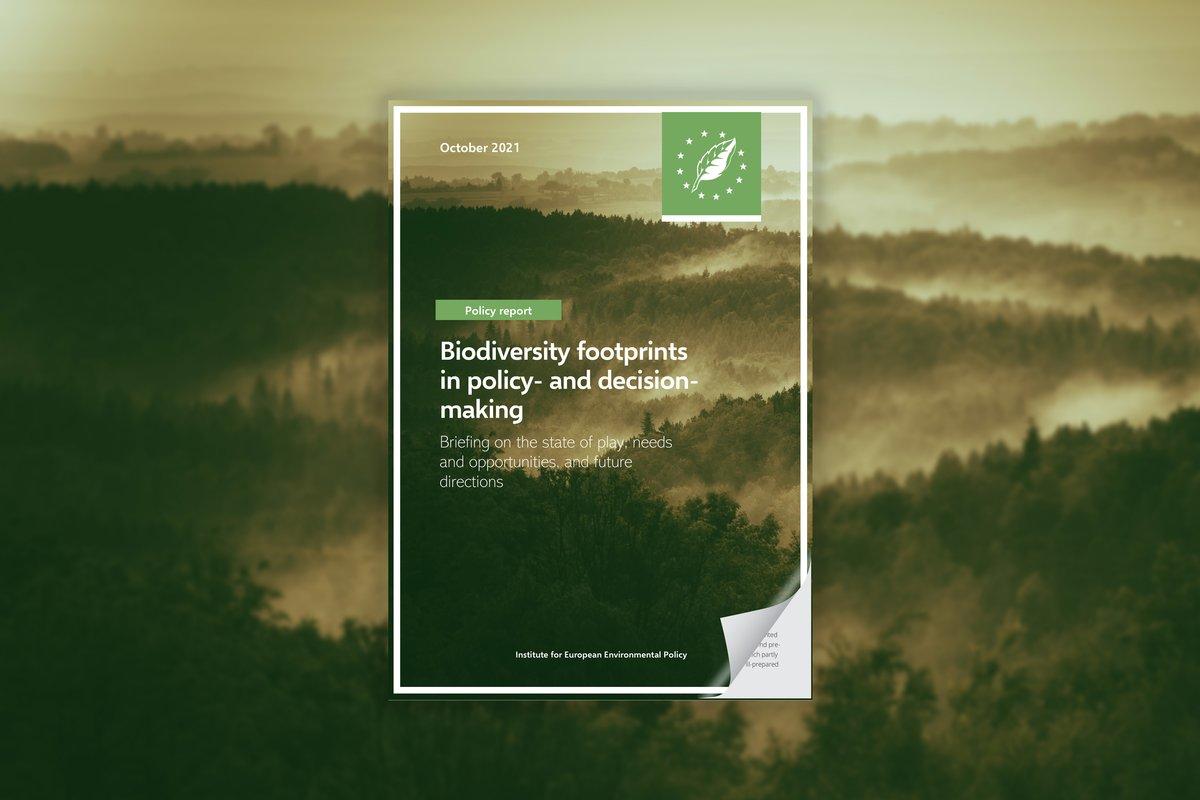AUTHORS: Nigel Dudley – Marianne Kettunen – Giulia Costa Domingo
This briefing gives an overview of the state of knowledge and current application of biodiversity footprint methods and tools in the EU, and identifies key future needs and opportunities for using these methods to support more sustainable decision-making.
Methods to better integrate biodiversity considerations into public and private decision-making are key to achieving the transformative change needed to halt and reverse biodiversity loss. As highlighted under the EU Biodiversity Strategy to 2030, these include effective footprint methods. Through measuring the biodiversity impact of specific sectors, products and organisations, biodiversity footprint measures can inform decisions that reduce potential negative impacts and enhance positive impacts on nature.
The briefing starts by defining “biodiversity footprints” and provides an overview of the key needs for these measures within the current EU and global policy context. Biodiversity footprints can contribute to the post-2020 biodiversity framework and the 2030 sustainability agenda by informing biodiversity targets, contributing to natural capital accounting, ensuring we remain within planetary boundaries, identifying global biodiversity impacts, monitoring the Sustainable Development Goals, and mainstreaming biodiversity into public policy areas (e.g., agriculture, trade, and development cooperation) and financial and private sector policies.
Given the wide range of available tools and methods, a typology is presented to navigate this complexity by classifying ‘biodiversity footprints’ along three key dimensions:
- Source of pressure: consumption-based, trade-based or production-based.
- Type of footprint: ecological, biodiversity or ecosystem service footprints.
- Method of analysis: methods differ in their purpose, scale, methodological complexity and approach.
The briefing then surveys the current ‘biodiversity footprint’ landscape by reviewing prominent existing tools and classifying them against the typology. Through this review, data requirements emerged as a key factor to consider. Key data sources are identified, and their usefulness, gaps and likely future developments assessed.
A final section evaluates the strengths and weaknesses of different footprint methods and evaluates whether they are likely to help meet the identified footprint needs in the EU and globally. Building on this analysis, key recommendations are identified:
To increase the strength of footprint analyses in the EU:
- Develop a clear and agreed definition of a biodiversity footprint
- Agree on the level of detail required within EU footprint methodologies.
- Analyse available footprint tools further considering these decisions, aimed at EU needs.
- If necessary, further development of footprint approaches to match needs.
To improve the data underpinning them:
- Support development of Red List assessments in data-poor, high biodiversity countries.
- Support data collection from citizen science.
- Work with partners to coordinate the transfer of existing data to the IUCN Red List and the Global Biodiversity Information Facility (GBIF).
- Use EU funding to increase member states’ capacity for biodiversity data collection and release for public use, and work with member states to make some data release obligatory for state-funded research.
- Support further research on automatic data collection options.
- Support further research on satellite monitoring as applied to vegetation.
- Support work on the optimum units of measurement for biodiversity change.
The focus in the present paper is on biodiversity data. We acknowledge that other data sources, particularly relating to supply chain data connecting consumption to production sites, are also frequently missing and are of critical importance here.
This is a scoping study, and consequently some broad judgements need to be further interrogated before any final decision is made on specific methods.
This work was funded by the European Union’s international engagement budget and runs in the context of EU engagement with the G20 on biodiversity and on sustainable finance and corporate reporting.



